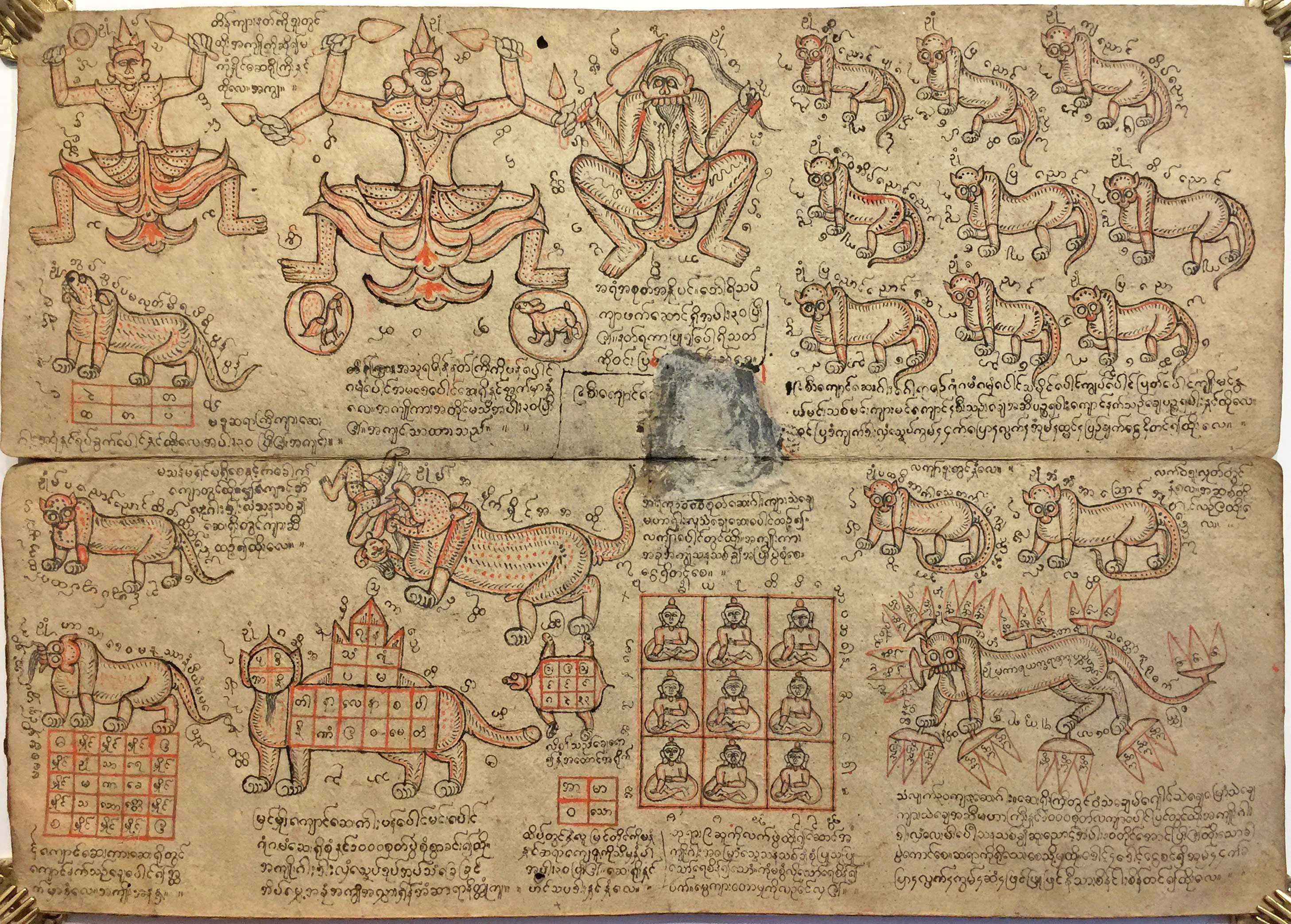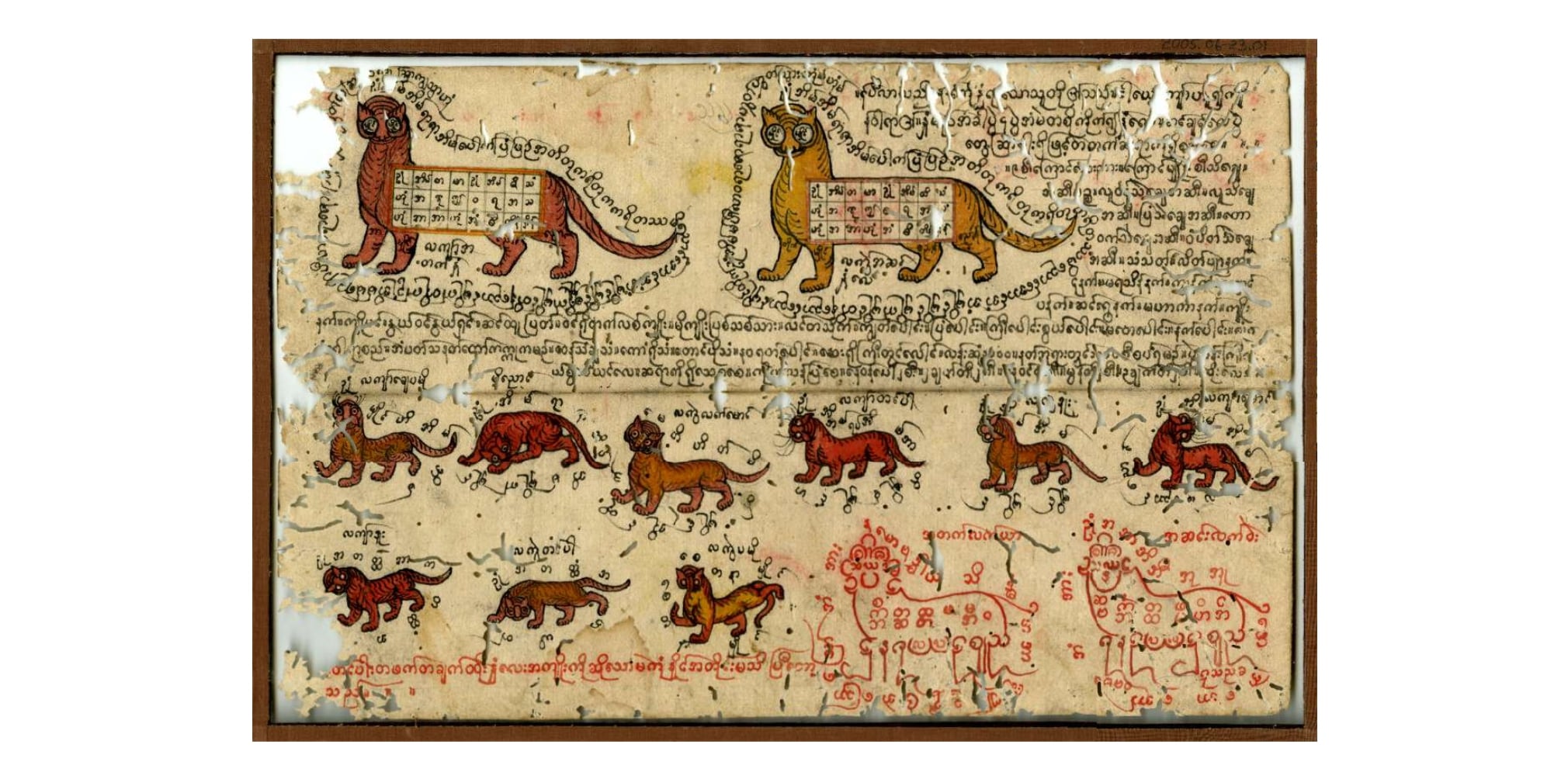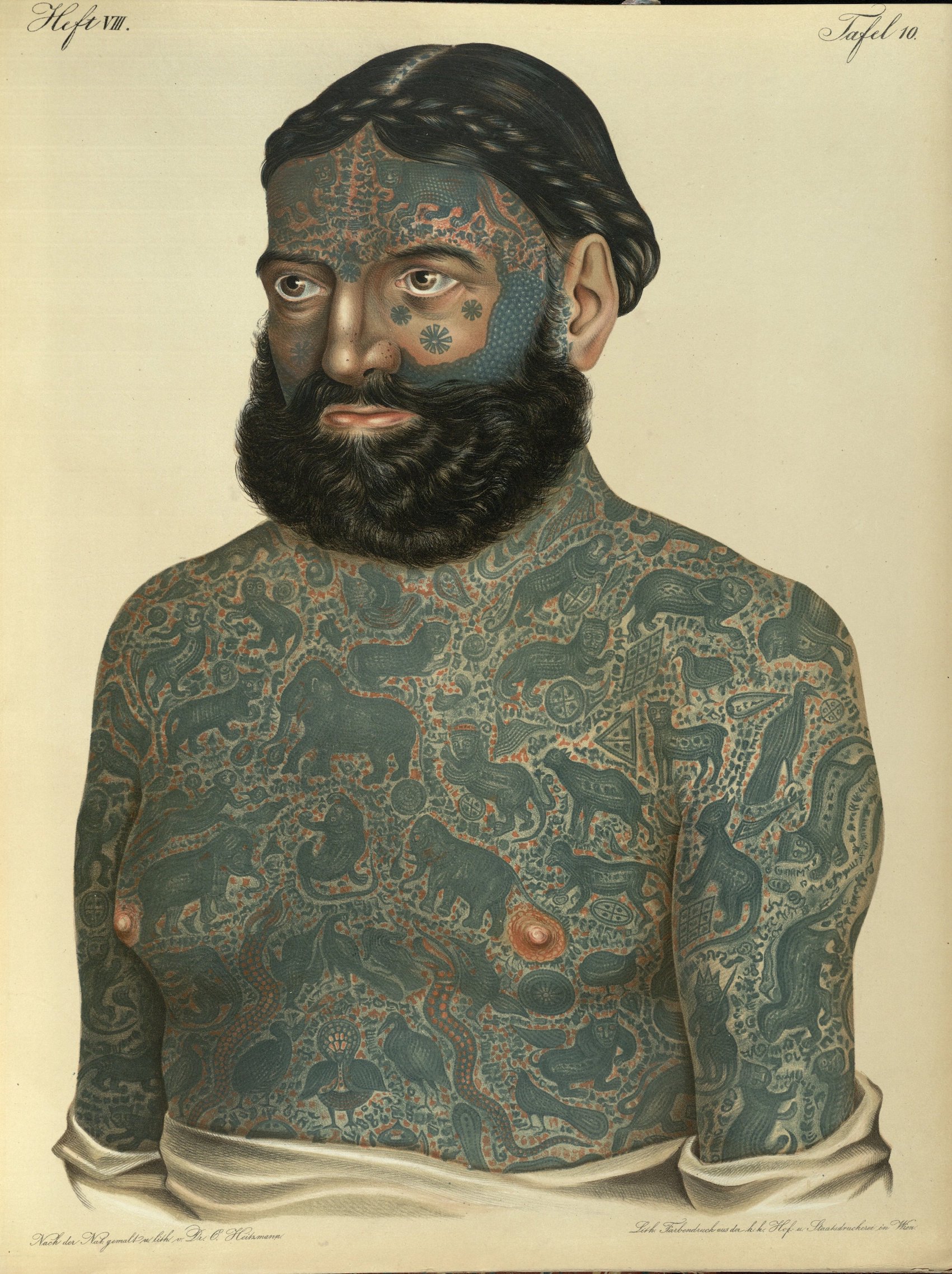


Captain Costentenus featured in the 19th century "Atlas of Skin Diseases", illustrated by two Austrian physicians who were also painters, Dr Anton Elfinger and Dr Carl Heitzmann.
19th century
Burmese tattoo manual
room Myanmar
These pages from 19th-century Burmese tattoo manuals are among a series of pages collected by the British Library and digitized for viewing online. It was probably used as a reference by Burmese tattoo practitioners. Traditional Burmese tattoos were believed to have magical powers that could make the skin impervious to various dangers such as snake bites, bullets, and swords, as well as less tangible threats from evil spirits or disease.
This tattoo manual was likely circulating around the same time that self-styled “Captain Costentenus” was in Burma. Captain Costentenus billed himself as the “The Tattooed Greek Prince” and may have been the world’s most tattooed man in his time. In the 1870s he toured Europe and America, and became a popular sideshow attraction at P.T. Barnum’s world-famous circus. He reportedly had 388 tattoos covering his entire body from the crown of his head to the tips of toes, with the exception of his ears and the soles of his feet.
Captain Costentenus told wild and conflicting stories about how he acquired the tattoos. One version had him captured while treasure-hunting in Burma and being subjected to the tattoos as punishment by order of the Burmese king. Another had him mining for gold in Tartary (Central Asia) where he was caught by barbarians and similarly punished. The tattooing process took three months with four men holding him down for each daily session. As one advertisement claimed, “The prolonged and horrible agony of this combination of Barbaric Act and Vengeance necessitated over 7,000,000 Punctures of the Quivering Flesh.”
In fact, his tattoos were all traditional Burmese protective tattoos and would not have been used as punishment. Rather, it is likely he commissioned them and conjured up his fantastical stories to titillate western audiences eager for tales of Oriental despots and barbarism during a time when their governments were in the process of consolidating colonial power in the far east.
Indeed, Captain Costentenus reportedly made good money off his tattoos. He dressed in fine clothes, wore gold and diamond jewellery, and had substantial financial investments.
Explore more in Late Konbaung Myanmar and the English Wars (1824-1885AD)